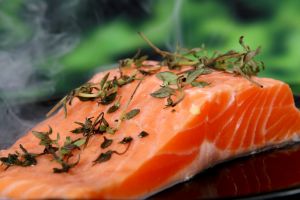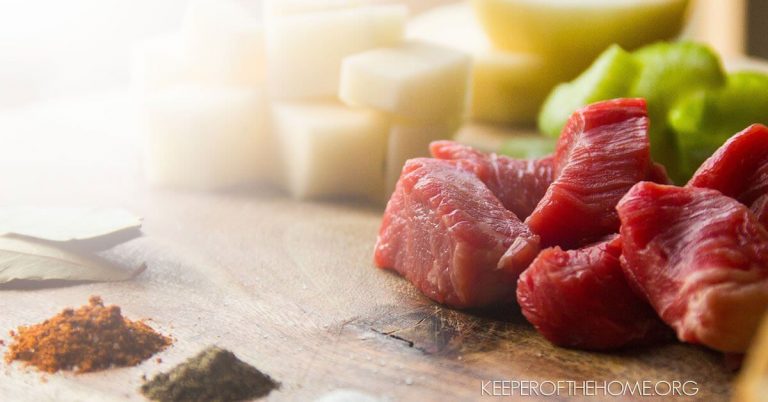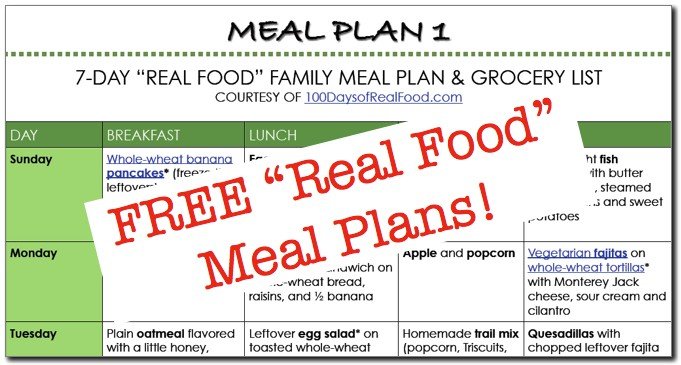Nutritional Foundations- Making the best of the regular grocery store, Part 2
This is the part of this series where I start to get really practical. Last week I discussed how it is possible to do well (nutritionally speaking) with only a regular grocery store, primarily by focusing on a whole foods diet and by shopping the perimeter of the store.
This week I'm going to begin to take you on a more detailed tour of the store, working through each department individually and offering some suggestions and tips (once I'm done this, I'll start working on individual questions that have been asked). Let's get started!
Produce

I know that this is one area where conventional grocery stores can wildly vary. One may have it's own organic produce section or carry lots of fresh and local vegetables and fruits.
Others may be more isolated, perhaps up North, and you may be lucky to find wilted iceberg lettuce, the only peaches you ever see are canned, and they think Kale is a trendy boys name. That's okay. There are still plenty of things that you can do to maximize the nutritional benefit of the produce that you are buying for your family!
Use the Dirty Dozen
I've linked to a previous post of mine, where I outline how you can use this list of the most highly sprayed vegetables and fruits to help you prioritize your buying decisions, and make the most of your budget. Read the post– I think you'll find it helpful, especially for those of you who do have some organics available (for generally ludicrous prices), but also for those who would like to know which foods to avoid or eat less of if organics aren't available.
Keep your produce colorful
Fruits and vegetables come in a dazzling array of colors, and the beauty of it is that it's not just for aesthetics. The color pigmentation in produce are an indication of the nutrients (the vitamins and minerals, antioxidants, etc.) that the food contains.
By making sure that your family eats a wide variety of colors, from the purple of beets and cabbages and the reds of peppers and tomatoes, to the greens of spinach and broccoli and the oranges of sweet potatoes and mangoes. The more colorful your diet, the more likely that you are getting a solid balance of the nutrients your body needs for abundant health.
Wash it well
See this post for a detailed discussion on the why's and how's of washing your produce. When you are only able to purchase conventional process, washing it well and peeling when necessary is very important to avoiding pesticides and other toxins.
Go darker
When you're given the option, choose produce that is darker in color, rather than lighter. A good example of this is lettuce and other greens. The darker the leaf, the higher the nutritional content. Grapes are another one. Choose dark purple grapes over the green variety (and additionally, choose domestic over imported, as the imports tend to use more sprays, and ones that are more highly toxic).
Antioxidants are your friends
These amazing nutrients and enzymes actually help your body to protect itself from the effects of damaging free radical cells, which cause disease. The more that you can include in your diet, the more that your body will be able to defend itself against free radicals (which can come from things like pollution, toxins, alcohol, cigarette smoke, etc.).
Vibrantly colored produce tends to have the highest levels (for example, cherries, blueberries, kale, broccoli). See this post for some more information on antioxidants, and a great list of which foods to find them in.
Consume liberally
Regardless of whether you are able to buy fruits and vegetables that are organic or not, they are a crucial part of a healthy diet, because they provide important vitamins, minerals and fiber. Make every effort to learn to include as many as you possibly can in your families meals and snacks! I aim for a solid 5-7 servings of fruits and veggies per day. We have our off days, but generally I would say that we eat close to that amount, so I know that it's very possible!
Seafood

There are so many contradicting opinions on seafood out there these days, and I don't feel that it's worthwhile to get into the various arguments and debates for the purpose of this post. However, I will say that although I think it is necessary to use discretion with some of the options that exist, in general, fish is an excellent source of protein and good fats, and should definitely have a place in your diet. We aim to eat fish a minimum of once a week, and try to change up the types that we eat whenever possible.
Here are a few basic guidelines:
Avoid farmed fish– There is really nothing redeeming about farmed fish. It usually has contaminants and toxins, may contain dyes (to make salmon more pink, for example), and does not have the highly beneficial fatty acid content of wild fish. If a package does not specify that the fish is wild, then assume that it is farmed.
Unfortunately, we cannot even fully trust the labeling that tells us a fish is wild. Check out this article. I liked the article's recommendations to consider whether you are buying the fish off season (my local grocery store only carries wild west coast salmon in the spring and summer- otherwise it's the expensive Alaskan salmon, or else it's farmed), and also if in doubt, you can purchase canned sockeye (red) salmon, because it is always wild.
More than one type of wild
To continue with this thought, it's worth mentioning that not all "wild" fish is created equal, so to speak. Wild fish that has been caught further north, in more pristine and unpolluted waters (such as Alaskan sockeye salmon) is a healthier choice than your typical wild pink salmon. However, it is also prohibitively priced for most regular families, including ours. I will very occasionally splurge on it, but we often stick to the wild pink. Sometimes, you just have to do the best you can. If you can afford to buy the better quality stuff, do it as often as you can, and watch for sales!
Frozen is fine
I know that many of you do not live in places where there is fresh fish in abundance. If you can find wild frozen fish, this is a perfectly fine substitute, practically as good as fresh. The only thing is to check whether the frozen fish has preservatives added. I was in denial that there was anything added to my frozen salmon filets I had been purchasing, until a friend mentioned it one day. I had been trusting that it was just plain old salmon, but when I read the ingredients I realized I was wrong. Check the ingredients, and avoid any sulfites/sulfates or any other preservatives.
Avoid shellfish
I'll likely get comments from people telling me they disagree (probably because they don't want to give up their shrimp and lobster!), but here's my personal opinion, based on much research and reading. There's a reason that God made shellfish off limits in the Levitical food laws. The basic reasoning is that shellfish are like vacuums in the ocean. Put them into contaminated waters, and they will purify the water. Guess where the toxins go? Into the shellfish. This is likely why so many people are either highly allergic or sensitive to shellfish, and why so many people get food poisoning and other illnesses from eating them. I'm not saying they don't taste good. I'm just saying God is smarter than us.
What to buy?
Whole salmon (fresh or frozen) and canned salmon usually top my list (though recent BPA concerns in canned foods have minimized my use of canned fish). I personally avoid tuna due to high mercury levels, but that is a debate with many loud voices on either side. We eat plenty of white fish as well- trout, cod, snapper, pollock, halibut- the possibilities are endless! Fresh fish prices are a bit exorbitant (although it is wonderful if you can get it), so I usually buy frozen and get fresh only when it goes on sale or just for a treat.
We usually either bake the fish with a sauce or herbs, lemon and butter, etc. or simply fry it in a pan with a bit of butter, salt and pepper, and maybe some spices. Sometimes I make a homemade tartar sauce, which is delicious. Sometimes I add fish to a curry, or to a chowder. Any way you do it, fish can be a wonderful addition to a healthy diet!
Next week we'll continue on with the grocery store, taking a look at the deli and dairy sections.
What types of produce and/or seafood do you purchase from your regular grocery store? Any tips to share with the rest of us on buying foods with the most nutritional value? Any particular issues you'd like to me to address?





I am really enjoying your blog and these tips. We do many of the same things, but I am definitely not as far along as you are. Thanks so much for sharing all of this information.
~Andrea
As much as I love shrimp, I have been taking seriously the avoidance of shellfish and pork since reading The Maker’s Diet. Every once in a while, I’ll eat these foods at others’ homes or when eating out (after all, we’re living under the new covenant), but I avoid them at home. I agree that there really is something to the Levitical dietary laws besides the “setting apart” of the Israelites.
Thank you for such great information! Particularly the Dirty Dozen list. Our journey into healthier eating is fairly recent and while I’ve done well at increasing the amount fresh fruits & veggies in our diet, I felt guilty for not buying all organic. So I’m pleased to see that most of the fruits and vegetables we eat are low on the list!
Love your blog and I have gleaned so much from it. We don’t touch shellfish or pork either. I would LOVE to have your homemade tarter sauce recipe when you get time. (Unless it’s on your blog and I just have not found it.) Thank you for sharing such important information. God bless!
Hi,
If wild salmon is not available where I live, would you recommend not eating farmed salmon at all, but canned wild salmon? I guess I’m asking if canned wild salmon is better than fresh farmed salmon?
Thank you.
Vicky